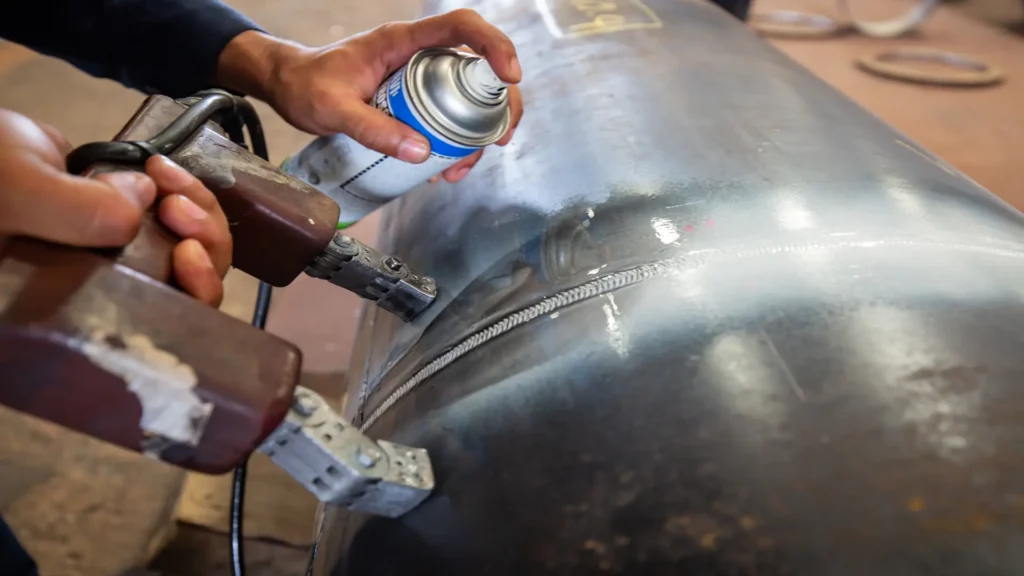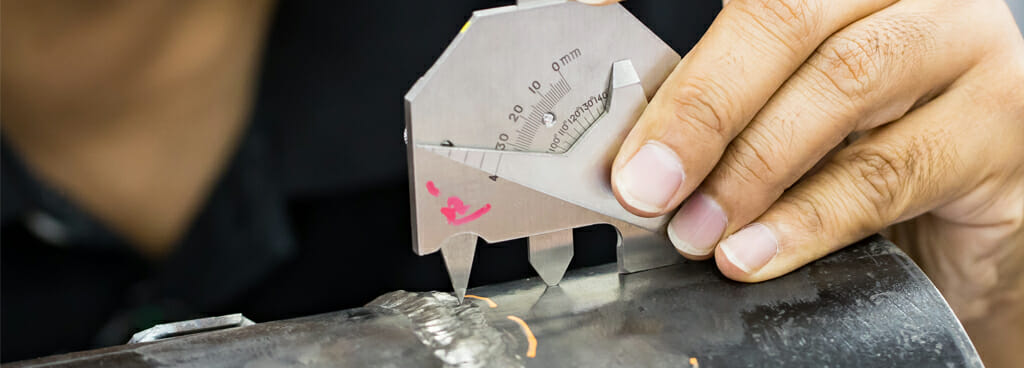Comprehending the Principles of Welding Assessment to Guarantee Top Quality and Security
In the realm of contemporary engineering, welding inspection stands as a foundation for making sure both the quality and security of structural productions. The procedure includes a precise evaluation of bonded joints, utilizing sophisticated techniques such as ultrasonic and radiographic screening to spot hidden imperfections. The knowledge of qualified inspectors is vital, as they connect the space between academic requirements and practical application. Their function prolongs past plain discovery, including the paperwork and interaction of findings to relevant stakeholders. Yet, what are the subtleties of these inspection techniques that make them indispensable for preserving structural stability?

Relevance of Welding Assessment
In the world of commercial fabrication, the importance of welding assessment can not be overstated. Welding evaluation plays a critical role in guaranteeing the stability, security, and longevity of bonded frameworks. Given the varied applications of welding in markets such as construction, vehicle, aerospace, and shipbuilding, the need for stringent quality assurance steps is critical. Proper examination makes certain that welds meet specified codes and criteria, which is essential for preventing structural failures that might result in tragic effects.
The procedure of welding inherently entails intricate variables, consisting of temperature, material properties, and ecological conditions, every one of which can influence the high quality of the weld. A complete examination determines issues such as splits, porosity, and incomplete combination, which can compromise the strength and dependability of the weld. By spotting these problems early, restorative actions can be taken, thus decreasing the threat of failure and associated prices.
In addition, welding inspection adds to governing conformity, as numerous industries are governed by strict safety and security criteria and standards. Failure to abide by these regulations can cause economic penalties and legal obligations. Eventually, welding assessment not just safeguards physical structures but likewise supports and shields human lives sector track records.

Key Welding Evaluation Methods
Although welding evaluation is vital to guaranteeing the quality and safety of bonded structures, it is the particular methods used that figure out the efficiency of the evaluation process. Trick welding assessment methods can be generally classified into non-destructive screening (NDT) and harmful testing.
Ultrasonic and radiographic testing are advanced techniques that enable inspectors to analyze the interior integrity of the weld. Ultrasonic screening utilizes high-frequency acoustic waves to identify stoppages, while radiographic testing uses X-rays or gamma rays to create a photo of the weld's inside. Magnetic particle testing and liquid penetrant screening are surface assessment methods made use of to locate surface area and near-surface defects. In comparison, damaging screening techniques entail physically damaging or cutting the weld to evaluate its mechanical homes. These comprehensive examination methods make certain that welds satisfy market requirements and security needs, thus ensuring structural integrity and performance.
Function of Licensed Assessors
Qualified assessors play a critical function in the welding evaluation process, making sure that all welds abide by rigorous sector criteria and safety and security regulations. Their proficiency is vital in determining problems or irregularities that may jeopardize the structural integrity of a weld. By carefully analyzing each weld, accredited examiners assist stop prospective failures that could lead to costly fixings or unsafe accidents.
To become certified, assessors need to go through rigorous training and testing, which familiarizes them with various welding methods, products, and testing approaches. This thorough expertise enables them to assess weld quality properly and make notified judgments regarding their safety and security and integrity. Licensed inspectors are efficient in translating plans and specifications, making certain that see this the welding work straightens with the job's layout requirements.
An integral part of their function is to document their searchings for extensively, offering a comprehensive document of the examination procedure. Their contribution is important in preserving high levels of high quality and safety and security in welding operations.

Devices Utilized in Welding Assessment
Welding examiners depend on a variety of specialized tools to perform their duties efficiently, guaranteeing each weld fulfills the essential criteria. Among these tools, aesthetic assessment aids like magnifying glasses and mirrors are basic, permitting examiners to carefully examine welds for surface area flaws such as cracks, porosity, and undercut. Calipers and fillet weld determines are crucial for gauging weld dimensions to validate conformity with design specifications.
Advanced devices expand past aesthetic help, consisting of non-destructive testing (NDT) devices. Ultrasonic testing devices are essential in detecting subsurface defects, utilizing audio waves to expose internal stoppages without jeopardizing the weld's stability. Radiographic testing employs X-rays or gamma rays to catch images of a weld's inside, highlighting potential issues.
Magnetic fragment screening is another vital device, especially for detecting surface area and near-surface suspensions in ferromagnetic materials. By applying electromagnetic fields and ferrous bits, examiners can determine flaws that may otherwise be undetectable.
Dye penetrant assessment is often made use of for non-ferrous products, giving a contrast-enhanced aesthetic look for surface-breaking defects. Welding Inspection Madison. With each other, these tools enable welding assessors to thoroughly evaluate weld top quality, making certain safety and security and integrity in numerous applications across sectors
Making Sure Structural Honesty

Welding treatments must stick to well established requirements and codes, such as those specified by the American Welding Society (AWS) or the International Company for Standardization (ISO) These standards make sure that the welds can stand up to environmental elements Visit Website and functional anxieties. Certified and licensed welders play an important function in this procedure, as their competence makes sure that techniques are used properly, lessening problems such as cracks, porosity, and insufficient combination.
Post-weld assessment is one more vital part of validating structural integrity. These examinations verify that the welds meet the required high quality criteria, providing guarantee of their durability and reliability.
Verdict
The basics of welding inspection are essential for maintaining the high quality and security of bonded structures. By carrying out key assessment approaches, such as aesthetic assessments and non-destructive testing, potential defects that can compromise structural honesty are identified. Licensed examiners are essential in ensuring conformity with market standards and effective communication amongst stakeholders. Using specialized devices even more boosts the inspection process, ultimately protecting human lives and prolonging the lifespan of bonded constructions.
Welding inspection plays a crucial function in making sure the integrity, safety, and longevity of bonded structures.Although welding examination is vital to making certain the high quality and safety and security of welded frameworks, it is the specific methods utilized that identify the effectiveness of the evaluation process. Trick welding assessment approaches can be broadly categorized right into non-destructive testing (NDT) and harmful testing.Certified inspectors play a critical duty in the welding examination process, ensuring that all welds comply with stringent sector requirements and security regulations.The principles of welding examination are crucial for preserving the check quality and safety and security of welded frameworks.